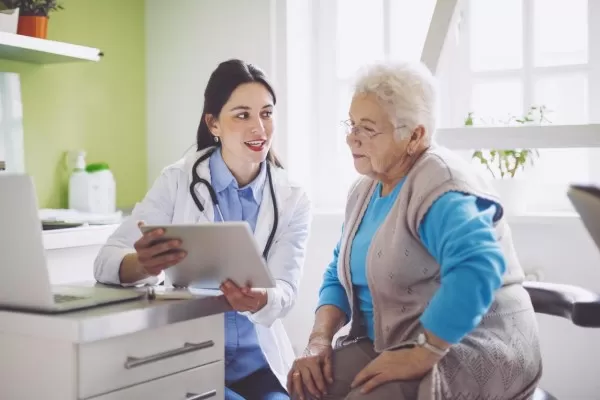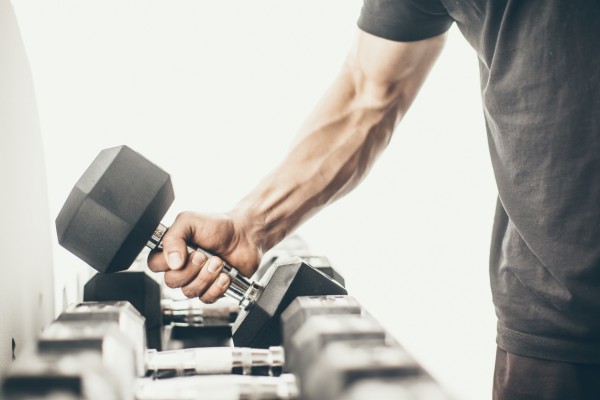Once you observe varicose veins, it’s important to reach out to a Vein Specialist for further assessment and possibly fitting for gradient support stockings for your varicose veins. Varicose veins are a sign of poor lower extremity venous circulation and may indicate something more serious, such as Chronic Venous Insufficiency, is going on. Several variables contribute to these bluish, twisted vessels bulging underneath the skin’s surface, like long periods of sitting or standing on your feet, smoking tobacco products, and weight issues.
Support compression hosiery improves venous circulation, providing relief from the discomfort caused by varicose veins. Stockings are readily available in local grocery stores and at some pharmacies without a prescription. Though use caution, not all support stockings are created equally! They come in different shapes and sizes, different materials, and varying pressure gradients. Also, some medical diagnoses may contraindicate their use.
Support Stockings Improve Venous Circulation
Simply said, gradient compression stockings assist venous circulation in the lower extremities! The science isn’t complicated: socks apply gradient compression to ankles, pushing blood flow towards the heart, rather than allowing it to pool near the feet. By augmenting skeletal muscle, therapeutic hosiery directs your blood flow in the right direction!
Gradient stockings require a prescription from a Vein Specialist, to address risk assessment and proper fitting. It’s important to consult a Doctor before wearing them, because there are a few contraindications to treatment, like Peripheral Arterial Disease or specific surgeries involving harvesting vessels from your leg(s).
GRADIENT LEVELS:
Low Compression ~ Class I Less than or up to 20 mmHg
Medium Compression ~ Class II from 20 – 30 mmHg
High Compression ~ Class III Greater than 30 mmHg
Not All Support Stockings Are Created Equally!
Be careful: gradient compression stockings come in all shapes and sizes! There are different kinds of support socks, such as elastic or non-elastic, which provide relief from heavy, aching legs. Non-medical hosiery does not use gradient pressure and can even worsen symptoms. Don’t guess! Talk with your Vein Specialist about which compression stocking is right for you!
Daily Hygiene
Proper fitting is essential to ensure your comfort and protects your skin. Conduct regular hygiene scans to look for breaks in the skin or blistering. When beginning treatment, it’s common to experience some discomfort for the first few days. Though if you are still uneasy, talk with your Physician and see if it’s okay to decrease the pressure to a more tolerable level.
Prevention Is Better Than A Cure!
While support stockings primarily treat varicose veins, you may want to consider wearing them to prevent their development. The additional support is especially important if there is a family history of varicose veins, circulation issues, or if your profession requires you to stand or sit for long stretches of time. Think of support stockings as your annual flu shot: a great way to prevent illness!
Support stockings work to prevent varicose veins from forming by supporting vessels and valves early on, reducing re-modeling inside vein walls. In this way, gradient hosiery helps slow disease progression by improving venous circulation. Gradient stockings are an essential part of your vein treatment plan as much as living an active and healthy lifestyle! Routine exercise, a well-balanced diet, and monitoring stress levels help to keep your vessels healthy and active!
Find Your Vein Score!
If you have observed bluish or reddish rubbery vessels underneath your skin’s surface, take a quick Vein Quiz to assess your overall health. Varicose and spider veins are the two most commonly seen symptoms of developing lower extremity swelling or something more severe like Chronic Venous Insufficiency. If you have a strong family history, work long hours, or have in the past experienced a deep venous thrombosis, (blood clot), connect with a vein doctor today!
Medically reviewed by Dr. Susanne Woloson on 5-01-2020.
*Disclaimer: “We are a participant in the Amazon Services LLC Associates Program, an affiliate advertising program designed to provide a means for us to earn fees by linking to Amazon.com and affiliated sites.”
Read This Next
A Guide to Perforator Veins The venous system of the lower limbs consists primarily of deep and superficial veins but there is a system of veins that connect the two,...
Read MoreAs the weather warms, many of us shed our heavy winter boots and shoes for lighter, airier sandals or sneakers. However, if we are one of those who has swollen ankles and...
Read MoreWhy Are My Arm Veins Bulging? Prominent, bulging veins in your arms and hands aren't usually a sign of a serious health concern. For many patients, however, they are a...
Read MoreHave you recently noticed the development of blue veins on your chest or breasts? If so, you have probably found yourself struggling with a variety of emotions: fear, self-consciousness,...
Read More





